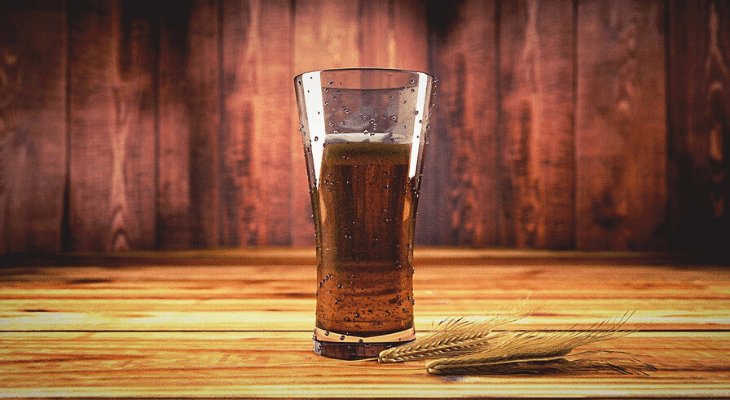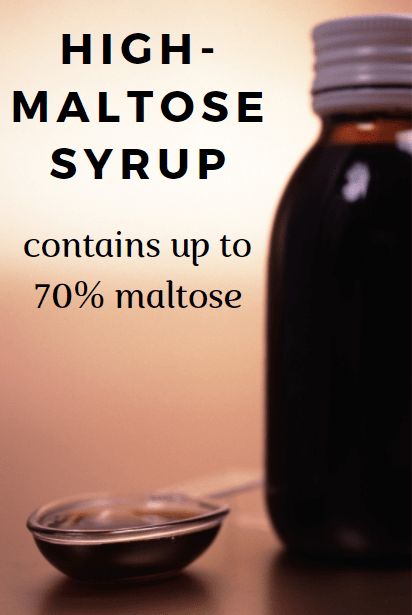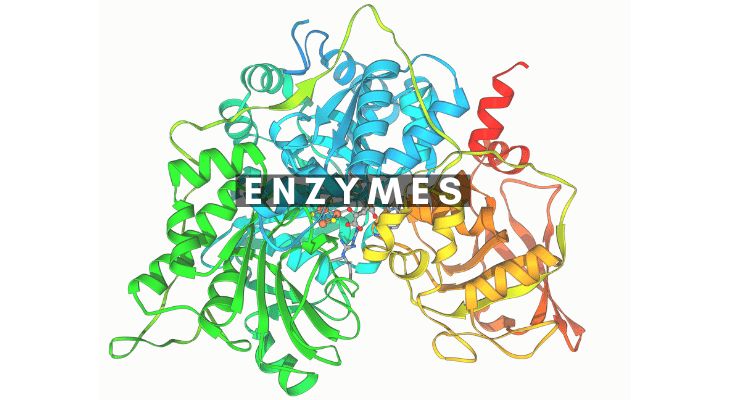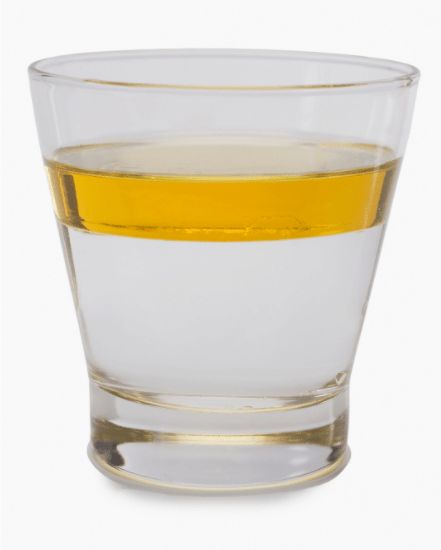Maltose? The Unrivaled Guide to Understanding Maltose

Maltose (also known as malt sugar) is of particular importance in brewing beer, as it constitutes the majority of the fermentable sugar, produced by malting barley and subsequently decomposing the starch content of malt.
What is Maltose? Maltose is a sweet-flavored disaccharide consisting of two glucose molecules linked to a glycosidic bond. Maltose is to be found in alcohol production but is also to be found in foods.
Interesting? Keep reading this unrivaled guide to understanding maltose, to learn where maltose is to be found, what it’s used for, simply everything about it!
Read Also: Does Adding Sugar to Beer Make It Stronger?
What Exactly is Maltose?
Maltose is kind of a mimic of sugar, so to say. Also, it has existed for at least as long as grain -in thousands of years. It was discovered when Homo sapiens arrived, who used it for invert beer. Maltose appears when grain is ‘fertilized’ and are allowed to sprout.
The more technical answer to maltose is, that it’s a disaccharide that is split up in the intestine into two molecules of glucose.
What is disaccharide?
Very short told, the disaccharide is a carbohydrate. There are three types of carbohydrates:
- Monosaccharides (glucose and fructose)
- Disaccharides (lactose and sucrose)
- Polysaccharides (glycogen, starch)
We are, of course, most interested in disaccharides, because that’s what we use in beer and other alcohols.
Disaccharide is a carbohydrate composed of two monosaccharides. Disaccharides are cleaved in the intestinal mucosa of special enzymes.
Many people associate sugar with glucose. But what we know as table sugar is, in fact, sucrose, not glucose.

What is Maltose Commonly Found in?
So, where is maltose found in? Here are the most common food sources of maltose:
- Bread
- Breakfast cereals
- Crackers
- Cornmeal
- Wheat
- Barley
- Candies
- Honey
- Molasses
- Energy bars
- Sweet potatoes
- Peaches
- Pears
Maltose is mostly to be found in grains like wheat, corn, barley, and rye. Maltose is also to be found in molasses, which is a sweetening product commonly found in baked goods.
For some types and forms of food, the cooking can increase the maltose content.
An example of this is sweet potatoes. Raw sweet potatoes don´t contain maltose, but cooked sweet potatoes do contain maltose, depending on which kind.
Maltose is to be found in foods in which starch is broken down. Maltose is presented in products like malted milkshakes and malted candies.
It also appears in food where starch is fermented by yeast or enzymes such as bread or brewed beverages.

What is Maltose Used for?
Maltose is produced by an enzymatic cleavage of starch. An example could be that malt syrup contains 50% maltose for the use of the food and beverage industry (also see the section above) but also in alcohol production.
That means, that maltose is used in cooking, but also while making alcohol.
Maltose is sometimes used as a deputy for what we knows as table sugar. It also appears in honey, bread, and much more.
Maltose in alcohol production
Maltose is of particular importance while brewing beer, as it constitutes most of the digestible sugar which is formed by the malting of the grain, and subsequent digestion of the starch content of the malt.
When making beer, maltose occurs in the malting process, and when the malt is distilling alcohol. So, when making beer and whiskey the fluid from the mashing process contains around 60-70 percent maltose.
When maltose is metabolized with yeast it becomes fermented, and the result hereby is ethanol and carbon dioxide.
Maltose is the principal sugar in the wort and comes from the breakdown of starch during the mashing process. During this process, the natural enzymes, that are to be found in malt, are decomposed. Of which in particular is an enzyme called beta-amylase.
Beta amylase is a starch that is present to make larger quantities of maltose, approximately 40% of the total carbohydrate content of the wort.
To optimize the production of the maltose during mashing depends on the temperature. The most suitable temperature for beta-amylase activity is a temperature with a range of 60°C–65°C
The single-infusion mashing usually happens on these temperatures.
The maltose that is to be found in the wort is transported into the yeast cells.
Here they are broken down to its consistent glucose molecules before subsequent metabolism into cell components, alcohol, and CO2.
As mentioned above, maltose can also be added to the wort from other starch sources than malted barley. It can be added in the form of corn, wheat, and other starches that can be converted using microbial enzymes for making syrup that contains glucose polymers.
In these syrups, maltose is the most important player when it comes to beer brewing. This type of syrup is a high-maltose syrup. The high-maltose syrup contains high levels of maltose.
The high-maltose syrup can be used to expand the brewing capacity when mashing facilities are limited.

Also read: How Much Sugar To Add When Making Wine?
Metabolism
Metabolism? That’s a wild term. But in all general, metabolism is a designation of the biochemistry turnover of chemical compounds in cells.
Is Maltose a Reducing Sugar?
Yes, maltose is a reducing sugar. That means, that the two glucose cells of the maltose should be combined. They should be combined in such a way, that an anomeric carbon are left, which can be open to form an aldehyde group.
Reducing sugar
So, now we know that maltose is a reducing sugar, but what is a reducing sugar?
A reducing sugar is a carbohydrate. This carbohydrate is oxidized by a weak oxidizing in a basic aqueous solution. A weak oxidizing is an oxidizing agent called oxidize aldehydes, which does not oxidize alcohol.
The well-known characteristic of a reducing sugar is that it generates up to several compounds in an aqueous medium, which contains an aldehyde group.
Well, that was a lot of fancy words, but what is an aldehyde group?
Aldehyde group
Aldehyde is, in general, a functional group of organic compounds. These groups contain the structure -CHO, which can be determining the chemical property of these compounds
Aldehydes can be manufactured by several different reactions, for example:
- oxidizing of primary alcohols
- dehydration of primary alcohol by a catalysator
- addition of water to alkynes
- addition of carbon mono dioxide and hydrogen to alkenes
Aldehydes are reactive compounds that are used in several chemical reactions.
To learn even more about sugars, try out this post: What Is Priming Sugar?
Is Maltose a Pentose Sugar?
Pentose is a sugar that is build up by five carbons. Maltose is a type of carbohydrate. Carbons are typically bound together of two glucose units.
Glucose has six carbons, six oxygens, and twelve hydrogens. Thereby you might say, that maltose is a pentose sugar, because of its amount of carbons.
Also read: Does Adding Sugar to Beer Make It Stronger?
Does Maltose Affect Blood Sugar?
Some might say, that there are refined differences in how the maltose affect the blood sugar level. Both glucose and maltose raise the blood sugar level faster than other sugars, and thereby increase the insulin secretion.
Maltose vs. table sugar
Most people often use normal table sugar (sucrose) in their cooking. This sucrose is a short, two-sugar chain made of one glucose molecule linked to one fructose molecule.
Fructose has more severe health implications than glucose. While sucrose (table sugar) consists of both sugars, one assumes that the health effect is in between those of glucose and fructose.
Maltose, however, is just made of glucose. Therefore it might be slightly healthier than table sugar. But, it has not been investigated enough to confirm or deny this claim. Therefore there is more research needed.
Is Maltose Bad For You?
As healthline.com describes it, there is almost no research exists on the health effects on maltose in the diet.
Maltose is broken down into glucose when digested. Therefore it’s health might be likely to other sugars. Nutritionally gives maltose the same amount of calories as starch and other types of crops.
Muscles, liver, and brain convert glucose into energy. When the body is saturated with energy, the remaining glucose is converted into lipids and is kept as fat. This applies to glucose in general.
The body uses maltose as energy, like every other sugars. Thereby maltose is not bad for you. But like other sugars, maltose can lead to obesity, diabetes among others. Everything in moderation.
Is Maltose a Protein?
Protein, fat, and carbohydrates are all energizing nutrients. The protein has the function as the building blocks of the body.
The protein in our body is responsible for muscle growth and the development of the body. Carbohydrates are, on the other hand, the one which gives us energy.
Maltose is a carbohydrate. Thereby maltose is not a protein.
Is Maltose an Enzym?
Now we know what maltose is, but is it similar to enzymes, or is maltose an enzyme? If it’s not, what is the difference? Let’s start with the enzymes.
Enzyme
Enzymes are proteins that have catalytic activity. This means that they can increase the speed of the many different chemical reactions. They are also a part of a myriad of processes in the human body and nature.
Enzymes can be purified from materials that can be found in the nature, or from microorganisms grown under specific conditions.
It’s also possible to manufacture enzymes using genetically modified organisms that are designed to produce huge amounts of a certain enzyme. The genetically modified material is discarded after purification of the enzyme and the enzyme does not contain any genetically modified material.

Maltose vs. enzym
To get closer to the question about maltose being enzymes we have to move on to amylases.
Amylases are enzymes that cleave amylose and amylopectin, which are the molecules of starch.
The cleavage products are maltose which consists of two glucose units and other small carbohydrates. These consist of three to ten glucose units. The enzyme maltase cleaves maltose to glucose.
In plants, amylases, along with several other enzymes, participate in starch degradation (carbohydrates are stored in plants in the form of starch). The decomposition occurs when the stored carbohydrates must again be included in the plant’s metabolism.
For example, amylase is formed in large quantities in germinating grains, because starch must be consumed for the germination process. This is utilized in the preparation of malt.
So, the short answer to the question is no, maltose is not an enzyme. Maltose is overall just an outcome of this amylase.
Does Yeast Digest Maltose?
While brewing beer, common monosaccharides like glucose, fructose and galactose occur. Are two monosaccharides merged, the other sugar structure called a disaccharide is formed.
Ordinary disaccharide presented while brewing sugar is saccharose and maltose.
Sucrose consists of one glucose molecule and one fructose molecule, while maltose consists of two glucose molecules.
By putting three monosaccharides together, a sugar structure is being formed. This is called a trisaccharide. The most common trisaccharide, while talking about brewing sugars, is called maltotriose. Maltotriose consists of three glucose molecules.
Here comes one more fancy concept; dextrin. Dextrin is when monosaccharides are gathered in structures of four or more, which cannot be digested by beer-yeast.
Although dextrin sometimes is added to some beers under the boiling process. This is added to increase the body in the final product.
To break down the brewing of sugar, the yeast starts the structure of the sucrose. First, the yeast breaks down the saccharides glucose and fructose components. Then it degrades glucose, then fructose, then maltose, and last but not least the maltotriose. All in that order.
Before the yeast can break down the different sugars, it usually has to use two different types of enzymes. To break down the sucrose, the yeast needs an enzyme called invertase. This enzyme breaks down the sucrose outside the yeast cells.
To break down maltose and maltotriose, the yeast uses another enzyme called maltase. This enzyme breaks down the maltose and maltotriose inside the yeast cells.
Bottom line is, that the sugars are split up into monosaccharides before they are fully used by the yeast. Which also is the answer to the question. Yes, the yeast digest the disaccharide, maltose, by splitting it into monosaccharides.
| Monosaccharide | Constituents |
| Glucose | — |
| Fructose | — |
| Galactose | — |
| Disaccharides | |
| Maltose | Glucose-Glucose |
| Sucrose | Glucose-Fructose |
| Lactose | Glucose-Galactose |
| Trisaccharides | |
| Maltotriose | Glucose-Glucose-Glucose |
| Saccharide | |
| Dextirn | Various glucose chain |
| Starches | Various glucose chain |
| Cellulose | Various glucose chain |
Would you like to know more about the yeast in beer, read this post: How Many Times Can You Reuse Yeast?
Does Maltose Dissolve in Water?
First of all, polar substances dissolve in polar liquids.
Like other sugars, maltose is polar molecules. Water is a polar liquid. Thereby maltose will easily dissolve in water.
Enzymes works like a kind of a catalysator and are involved in specific reaction, on special molecules. The enzymes catalyse some changes to those molecules the enzyme is bound to. But for this simple ‘polar’ dissolution, an enzyme is not necessary.
Polar or nonpolar
Here comes a slightly more edible explanation to substantiate the explanation above.
Some molecules are positively charged at one end, and negatively at the other end. These molecules are called polar.
Polar molecules pulls in other polar molecules. The negative end would like to bound with other molecules’ positive end. An example of a polar molecule is water.
There are also molecules without a positive and a negative end. The molecules are called nonpolar. An example of a nonpolar molecule is oil.
Water and oil cannot be mixed, because one of the molecules are polar, and the other is nonpolar.

15 Facts About Maltose
To sum up the unrivaled guide to understanding maltose I have made a list of facts about maltose.
- Maltose is two glucose molecules joined together, which makes it a disaccharide
- Maltose is mostly to be found in grains like wheat, corn, barley, and rye
- It is less sweet than honey and one-third as sweet as table sugar
- It’s used in beer brewing. But only about 60 percent will ferment
- It will caramelize at about 350? (180?)
- It has existed for thousands of years
- Maltose appears when the grain is ‘fertilized’ and are allowed to sprout
- Maltose is produced by an enzymatic cleavage of starch
- Maltose is a reducing sugar
- Maltose is not an enzyme
- Maltose is a pentose sugar, because of its amount of carbon
- Maltose is a carbohydrate, thereby it’s not a protein
- Maltose can be digested by yeast.
- Maltose dissolve in water. Polar substances dissolve in polar liquids
- Maltose is the principal sugar in the wort
Read Also: Best Propane Burner For Homebrewing



